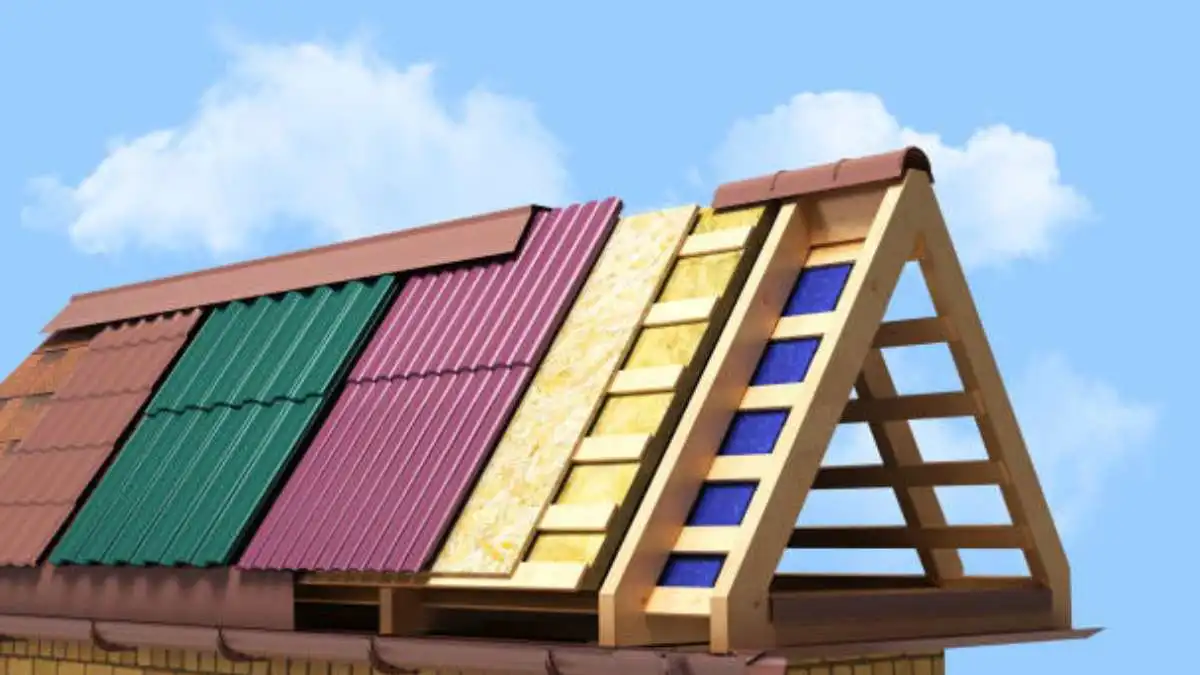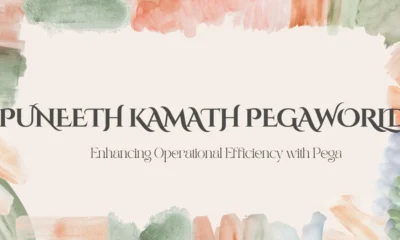HOME IMPROVEMENT
The Science of Roofing: How Different Materials React to Weather Extremes

A home’s roof serves as the primary barrier against the elements, but not all roofing materials react the same way to extreme weather conditions. Factors such as temperature fluctuations, moisture levels, and UV exposure can significantly impact the lifespan and performance of a roof. Understanding the science behind how roofing materials respond to different environmental conditions can help homeowners make informed decisions about the best options for their location.
This article explores how various roofing materials react to different weather extremes, their advantages and limitations, and how homeowners can maximize their durability through proper maintenance and installation.
1. The Impact of Extreme Heat on Roofing Materials
High temperatures can cause thermal expansion, weaken adhesives, and degrade roofing materials over time. Prolonged sun exposure also accelerates the breakdown of certain materials, leading to reduced efficiency and aesthetic deterioration.
How Different Roofing Materials Handle Heat:
- Asphalt Shingles: Prolonged UV exposure causes asphalt to dry out, leading to cracking and brittleness. Over time, granules wear away, reducing reflective capabilities and increasing heat absorption.
- Metal Roofing: Reflects sunlight effectively, helping to keep homes cooler. However, metal expands and contracts with temperature changes, requiring proper installation to avoid structural movement issues.
- Clay and Concrete Tiles: Naturally resistant to high temperatures and do not warp under extreme heat. Their density helps regulate indoor temperatures by reducing heat transfer.
- Membrane Roofing (TPO, EPDM, PVC): Popular for flat roofs, these materials are designed to withstand heat exposure but may degrade without proper UV-resistant coatings.
2. Cold Weather Challenges: Freezing, Expansion, and Snow Load
Winter conditions bring unique challenges such as ice formation, thermal contraction, and snow accumulation. Materials that do not respond well to freezing temperatures can become brittle and prone to cracking.
How Different Roofing Materials Handle Cold and Snow:
- Asphalt Shingles: Can become brittle in freezing temperatures, making them more susceptible to breakage.
- Metal Roofing: Sheds snow efficiently due to its smooth surface, reducing the risk of excessive weight buildup.
- Slate and Tile Roofing: Highly durable against cold weather, but heavy snow accumulation can put strain on the structure if not properly supported.
- Rubber Roofing (EPDM): Flexible and highly resistant to freeze-thaw cycles, making it an excellent option for cold climates.
3. Wind Resistance and Storm Durability
High winds and storms can tear off shingles, lift panels, and expose the underlying structure to water damage. Some materials offer better wind resistance than others, making them ideal for storm-prone regions.
How Different Roofing Materials Handle Wind and Storms:
- Impact-Resistant Asphalt Shingles: Designed with reinforced backings to withstand wind speeds up to 130 mph.
- Metal Roofing: Strong interlocking panels provide exceptional wind resistance, reducing the likelihood of uplift.
- Tile and Slate Roofing: Heavy and resistant to wind, but individual tiles may crack under extreme pressure.
- Flat Roofing Systems (TPO, EPDM): Vulnerable to seam separation if not installed properly, but with the right adhesives and insulation, they can resist wind uplift.
4. Moisture Resistance and the Role of Roofing in Preventing Water Damage
Rain and humidity create an environment where mold, mildew, and rot can develop if roofing materials do not provide proper water resistance.
How Different Roofing Materials Handle Moisture:
- Metal Roofing: Impervious to water, with proper coatings to prevent rust.
- Asphalt Shingles: Can absorb moisture if not installed correctly, leading to mold growth and premature aging.
- Slate and Tile Roofing: Naturally water-resistant but require effective underlayment to prevent leaks.
- Single-Ply Membrane Roofing (PVC, TPO): Seamless designs reduce the risk of water penetration, making them ideal for flat roofs in rainy regions.
5. The Role of Reflectivity and Energy Efficiency in Roofing
Roofing materials influence a home’s energy efficiency by affecting heat absorption and insulation.
How Different Roofing Materials Improve Energy Efficiency:
- Cool Roofs: Designed with reflective coatings to reduce heat absorption and lower cooling costs.
- Metal Roofing: Reflects solar radiation effectively, making it an energy-efficient option.
- Clay and Concrete Tiles: Thermal mass helps regulate indoor temperatures, reducing heating and cooling needs.
- Green Roofs: Incorporate vegetation that naturally insulates buildings while improving air quality.
6. Choosing the Right Roofing Material for Your Climate
Selecting a roofing material suited to your region’s weather conditions ensures longevity and performance.
Best Roofing Options by Climate:
- Hot Climates: Metal roofing, cool roof coatings, and clay tiles provide excellent heat resistance.
- Cold Climates: Slate, metal, and rubber roofing withstand freeze-thaw cycles effectively.
- Wind-Prone Areas: Metal, impact-resistant shingles, and well-secured membrane roofing perform well in high winds.
- Humid and Rainy Climates: Metal, slate, and waterproof membrane roofing prevent moisture infiltration.
7. Roofing Innovations That Improve Weather Resistance
Recent advancements in roofing technology have led to the development of high-performance materials that enhance durability against extreme weather conditions.
Modern Roofing Enhancements:
- Impact-Resistant Shingles: Designed to withstand hail and flying debris.
- Self-Sealing Underlayment: Provides additional waterproofing protection in storm-prone areas.
- Solar-Reflective Coatings: Improve energy efficiency by reflecting sunlight.
- Polymer-Modified Asphalt Shingles: Offer enhanced flexibility and weather resistance.
8. Maintenance Tips to Extend Roofing Lifespan
Regardless of material choice, proper maintenance is essential for prolonging the life of a roof.
Essential Roof Maintenance Practices:
- Regular Inspections: Identify small issues before they become major problems.
- Gutter Cleaning: Prevents water buildup and mold growth.
- Trimming Overhanging Branches: Reduces damage risk from falling limbs and debris.
- Repairing Minor Damage Promptly: Prevents further deterioration.
9. How Professional Roofing Services Enhance Longevity
Working with an experienced roofing contractor ensures that a roof is installed correctly, using the best materials for a given climate.
Benefits of Professional Roofing Services:
- Proper material selection based on regional weather conditions.
- Expert installation techniques that maximize durability.
- Routine maintenance to prevent premature wear and tear.
Class Roofing provides expertise in selecting and installing weather-resistant materials tailored to different climate challenges. Through high-quality craftsmanship and advanced roofing technologies, they help homeowners enhance the durability and performance of their roofing systems.
Conclusion
The science behind roofing materials reveals how they interact with extreme weather conditions, from intense heat and high winds to heavy snowfall and moisture exposure. Choosing the right roofing material based on regional climate conditions is crucial for maintaining home protection and energy efficiency. By staying informed about material properties, embracing modern roofing innovations, and performing routine maintenance, homeowners can extend the lifespan of their roof while ensuring long-term performance. With professional guidance from Class Roofing, homeowners can invest in a roofing system that withstands nature’s toughest challenges while enhancing home value and efficiency.
-

 BIOGRAPHY6 months ago
BIOGRAPHY6 months agoBehind the Scenes with Sandra Orlow: An Exclusive Interview
-

 HOME1 year ago
HOME1 year agoDiscovering Insights: A Deep Dive into the //vital-mag.net blog
-

 HOME1 year ago
HOME1 year agoSifangds in Action: Real-Life Applications and Success Stories
-

 BIOGRAPHY1 year ago
BIOGRAPHY1 year agoThe Woman Behind the Comedian: Meet Andrew Santino Wife




























